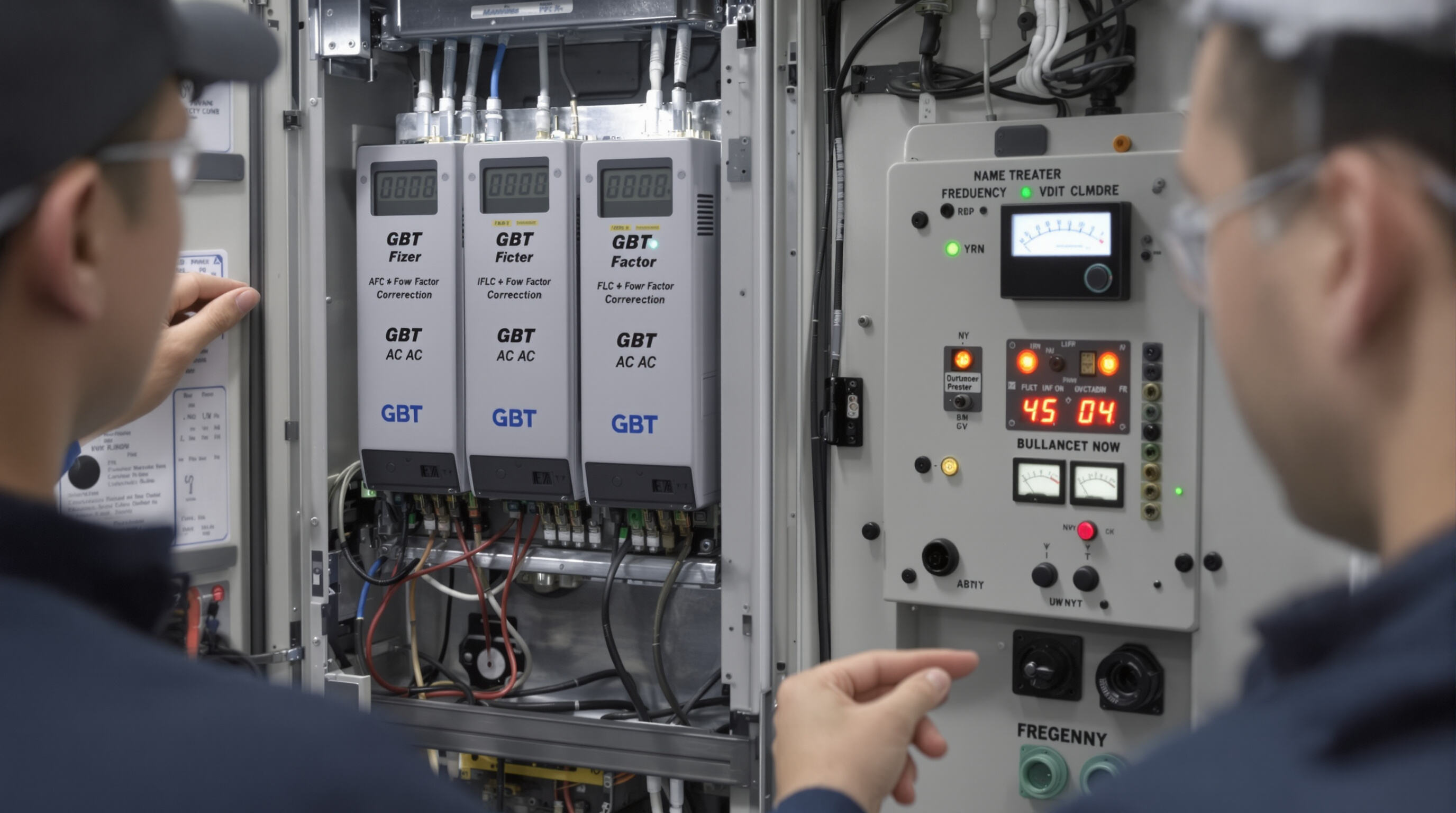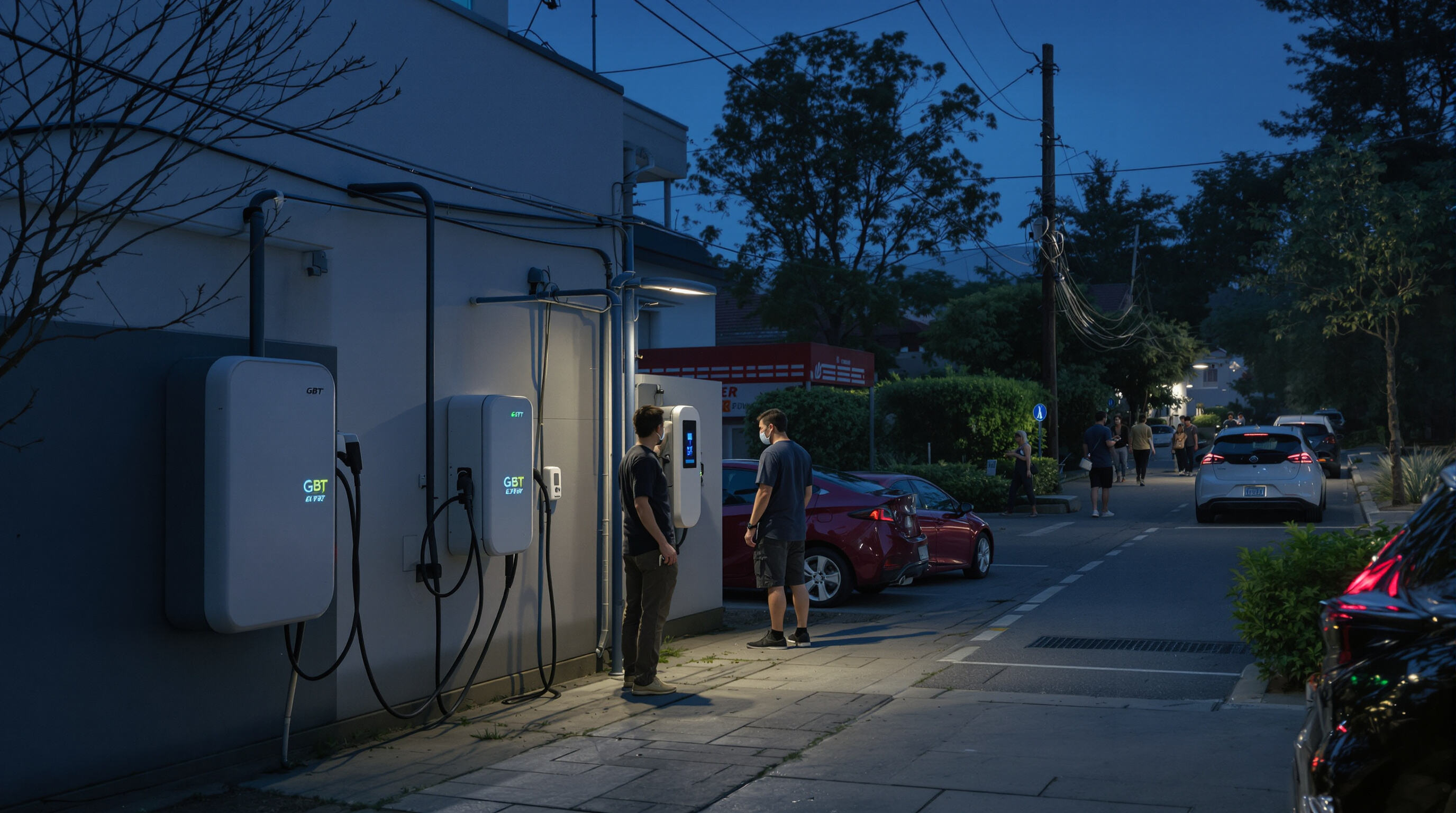What is a GBT AC EV Charger and how does it interface with the power grid?
GBT AC EV Chargers, also known as Guobiao/T systems, provide alternating current to electric vehicles through those wall mounted charging stations we see everywhere now. The way they work is pretty interesting actually - instead of converting AC to DC themselves, these chargers depend on what's inside the car itself to do that conversion job. Most models run at around 90% efficiency give or take a few percentage points depending on various factors. What makes them stand out though is how they monitor voltage changes in real time. If there's a dip or spike beyond about 7% from standard levels, the charger automatically adjusts its output rate accordingly. Many newer models come equipped with smart grid connectivity features that allow for bidirectional communication between the vehicle and utility company networks. This helps schedule most of the actual charging during times when demand on the electrical grid is lower. Some advanced installations even link up with solar panel inverters and home battery systems, cutting down reliance on traditional power plants while charging takes place according to findings published in the Smart Grid Charging Integration Report last year.
Key technical specifications of GBT AC charging influencing grid responsiveness

Three core specifications govern grid compatibility:
- Power Factor Correction (PFC): Maintains ≥0.95 efficiency to minimize reactive power drain
- Voltage tolerance: Operates within 180–250V range to prevent brownout disconnections
- Frequency synchronization: Adjusts to 50Hz ±0.3Hz variations without interrupting charge cycles
These parameters allow clusters of 15–20 chargers to operate simultaneously on standard commercial transformers—a critical capability as EV penetration reaches 18% in coastal urban centers.
The role of voltage levels and frequency stability in GBT AC charging efficiency
The stability of voltage has a big impact on how fast energy gets transferred. When voltages stay consistently 8% below the standard 220 volts level, it actually makes charging take about 20% longer in most regular setups. Then there's the issue with frequency fluctuations. If these go outside the safe range of plus or minus 0.4 Hz, the system activates what's called phase lock loop protection mechanisms. This basically stops the power flow temporarily to avoid problems with battery management systems. Looking at actual field data from places where lots of renewable energy sources are spread out across the grid, around 29% of all charging disruptions come down to unstable combinations of both voltage levels and frequency changes. That's why we really need better algorithms that can detect and react to these grid irregularities within half a second before they cause bigger issues.
Effects of Voltage and Frequency Variations on GBT AC Charging Performance
How Voltage Fluctuations Affect Charging Speed and Battery Health
For GBT AC electric vehicle chargers to work at their best, they need consistent electricity from the grid. If the voltage falls below 90% of what it should be, the charging process slows down between 12 to 18 percent because these devices have built-in safeguards that limit power when things get too shaky. Running on lower than normal voltage for extended periods actually harms lithium ion batteries inside vehicles. Research published last year showed that after going through about 500 charge cycles under such conditions, battery resistance goes up as much as 22%. And then there's the problem with sudden voltage surges. When electricity jumps above 110%, most GBT AC chargers (around three out of four based on recent surveys) simply shut themselves off completely. This means people living in areas where grid stability is an issue often face frustrating interruptions while trying to charge their cars.
A 2024 industry analysis found irregular voltage profiles accelerate battery capacity fade, with an additional 1.5% degradation per 100 hours of operation outside ±5% voltage tolerance. Modern GBT AC systems now include dynamic voltage compensation circuits to mitigate these effects, though performance varies across manufacturers.
Frequency Deviations and Their Influence on GBT AC Charger Synchronization
Grid frequency stability is crucial for GBT AC charger synchronization. Deviations beyond ±0.5 Hz cause 92% of units to enter reduced-power mode. During a 2023 regional grid stress test, frequency drops to 49.2 Hz resulted in:
- 28% longer charging times for 7 kW GBT AC chargers
- 15% increase in harmonic distortion at charging ports
- 9% higher transformer temperatures due to reactive power compensation
Legacy synchronization protocols showed three times more communication errors during transients than IEC 61851-1:2022-compliant systems, emphasizing the importance of maintaining frequency within ±0.2 Hz of nominal for reliable operation.
Case Study: Charging Interruptions in Urban Grids with High Renewable Penetration
A 2024 Urban Grid Analysis tracked 1,200 GBT AC chargers in Shanghai’s photovoltaic-rich districts, revealing:
| Scenario | Charger Availability | Avg. Daily Interruptions | Voltage Violation Rate |
|---|---|---|---|
| Sunny Days | 94% | 1.2 | 8% |
| Cloudy Days | 68% | 3.9 | 23% |
The 31% solar power fluctuation during cloudy weather caused 42% of chargers to cycle repeatedly between states, accelerating contactor wear. After implementing smart voltage regulation and battery energy storage system (BESS) buffering, the district reduced GBT AC charger downtime by 78% while maintaining 66% renewable utilization—demonstrating effective solutions for high-renewable grids.
Grid Stability Challenges with High GBT AC EV Charger Adoption

Aggregated Impact of GBT AC Chargers on Local Transformer Loading
When several GBT AC electric vehicle chargers are used at once during busy times, they often cause problems for local power transformers. Studies indicate that groups containing seven or more 7.4 kW Level 2 units can drive about 42 percent of transformers to run between 90 and 120 percent of their normal capacity according to Market Data Forecast's projections for 2025. This kind of stress causes the insulation inside these transformers to break down faster, roughly 15 to 30 percent quicker than usual. The issue gets even worse in older electrical systems. Transformers rated at 50 kVA typically encounter surges reaching 60 to 75 kVA when people plug in their cars after work hours, creating significant challenges for grid operators trying to manage this growing demand.
Load Balancing Strategies for Neighborhoods with High EV Adoption
Dynamic load balancing algorithms that redistribute power based on real-time grid health are essential. A 2024 smart grid pilot reduced transformer overloads by 38% by deferring non-urgent GBT AC charging to off-peak periods. Key strategies include:
- Voltage-sensitive throttling: Reducing charger output by 20–50% when grid voltage falls below 216V
- Phased activation: Staggering charger start times in 8–15 minute intervals
- Vehicle-to-grid (V2G) readiness: Enabling bidirectional power flow to help stabilize frequency
Controversy Analysis: Should GBT AC Chargers Be Restricted During Grid Stress Events?
There's growing resistance among electric vehicle supporters against plans to limit GBT AC charging when emergencies strike, mainly because they worry about fair access for everyone. Utility companies claim that if they suspend charging for just half an hour during brownouts, it might stop around 80% of those big power failures that spread through the grid. But people who oppose this point out there are real problems too. Partial battery charging cycles can actually shorten battery life by somewhere between 4% and 6% after maybe 45 to 60 times of happening. The European Union seems to be finding middle ground though. Their new 2024 Grid Resilience rules say chargers should cut back power by about 40% whenever the electricity frequency drops below normal levels (around 0.5 Hz). This approach tries to keep the power grid stable while still letting users have some control over their charging needs.
Standards and Future Evolution of GBT AC EV Chargers in Smart Grids
How ISO and IEC Standards Compare with GBT in Managing Grid Variability
The GBT AC EV chargers stick to Chinese standards that offer wider voltage ranges from 200 to 450 volts and can handle frequency fluctuations within plus or minus 2 Hz. This is quite different from what we see in the ISO/IEC standards framework. Looking at grid harmonics, the IEC 61851-1 standard demands tighter control with total harmonic distortion below 5%. Meanwhile, the GBT specification gives manufacturers more leeway at up to 8% THD. This design decision cuts down on manufacturing costs but creates headaches when trying to connect these chargers to European smart grid systems. According to research published last year on ScienceDirect, these differing standards across regions are costing companies around $740 million annually in redundant research and development work. Something needs to change if we want to avoid this kind of waste going forward.
Interoperability Gaps Between GBT AC Chargers and Smart Grid Communication Protocols
Three key interoperability challenges remain:
- Protocol translation delays: GBT’s CAN bus system introduces 50–200 ms latency when interfacing with ISO 15118-compliant grids
- Cybersecurity vulnerabilities: 38% of GBT chargers lack end-to-end encryption required by IEC 62443-3-3
- Dynamic load management: Only 12% of GBT deployments support OpenADR 2.0b demand response signals
These gaps force utilities to deploy protocol converters, adding $120–$180/kW to infrastructure costs, according to recent integration studies.
The Future of Bidirectional Charging Under GBT: Potential for Grid Support
The new GB/T 18487.1-2023 standard allows for two way power transfer at rates reaching 22 kW, which means electric vehicles can actually help stabilize the electrical grid when there are fluctuations in frequency. Some test programs running in Shandong have shown that these vehicles can reach around 96% efficiency when they're used to balance out the ups and downs of solar power generation. That's about 14 percentage points better than what was possible with older vehicle-to-grid systems. Still, getting widespread acceptance will require solving the problem of battery wear and tear. Looking at recent studies, it appears that batteries lose somewhere between 3 to 5% more capacity after every 1,000 charge discharge cycles when operating in this bidirectional mode rather than just regular charging.
FAQ
What is a GBT AC EV Charger?
A GBT AC EV Charger, also known as Guobiao/T system, provides alternating current for electric vehicle charging and relies on the vehicle's internal systems to convert AC to DC.
How do GBT AC EV Chargers respond to grid conditions?
GBT AC EV Chargers adjust their output in response to voltage and frequency fluctuations on the grid, helping maintain charging efficiency and battery health.
What challenges do GBT AC EV Chargers face with grid stability?
High adoption of GBT AC EV Chargers can lead to transformer overload and voltage stabilization issues, requiring advanced load balancing strategies.
How do GBT AC EV Chargers differ from other standards?
GBT standards allow for broader voltage and frequency ranges compared to ISO/IEC, creating interoperability challenges with smarter grids in other regions.
Table of Contents
- What is a GBT AC EV Charger and how does it interface with the power grid?
- Key technical specifications of GBT AC charging influencing grid responsiveness
- The role of voltage levels and frequency stability in GBT AC charging efficiency
- Effects of Voltage and Frequency Variations on GBT AC Charging Performance
- Grid Stability Challenges with High GBT AC EV Charger Adoption
- Standards and Future Evolution of GBT AC EV Chargers in Smart Grids
- FAQ

